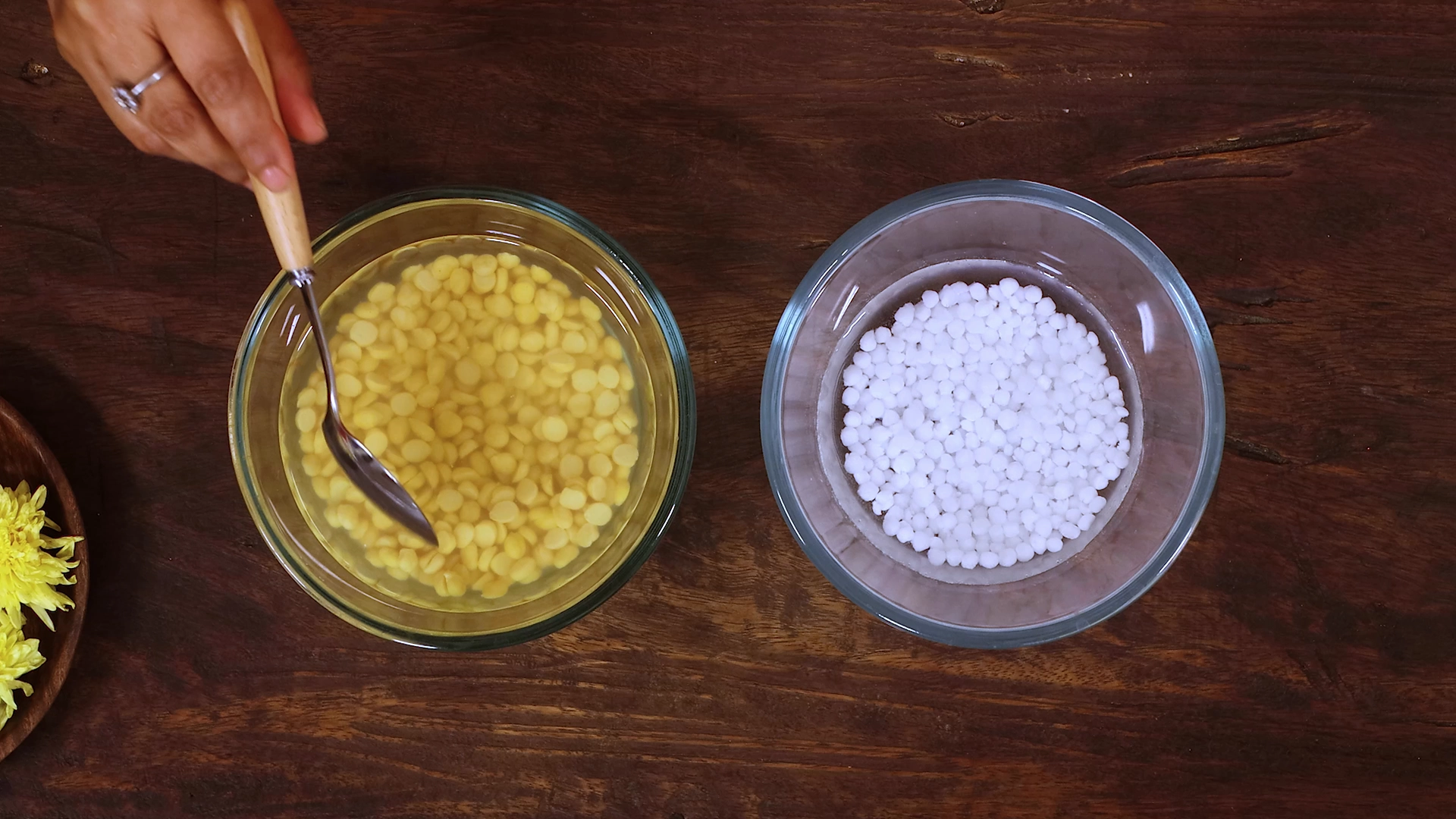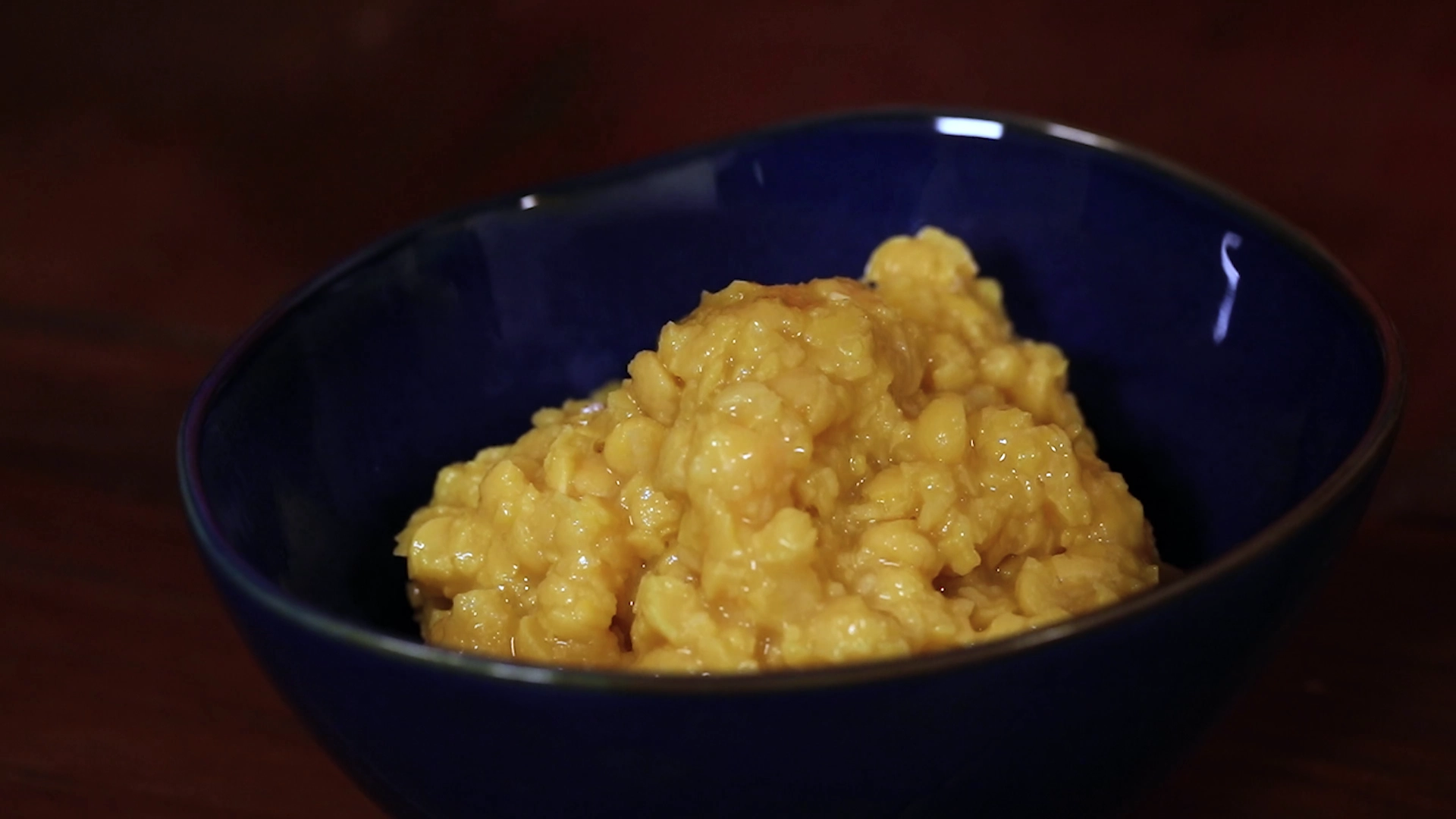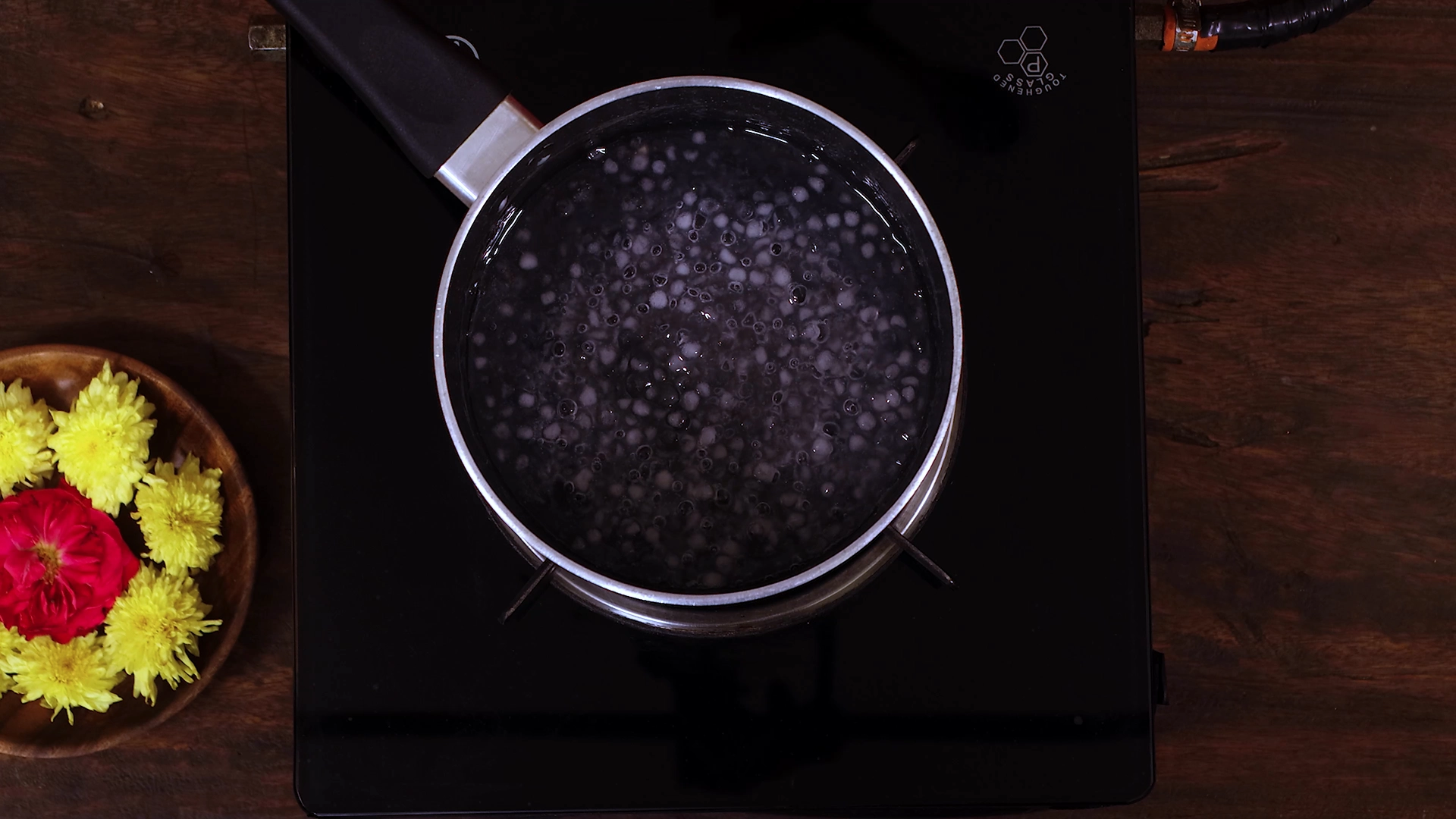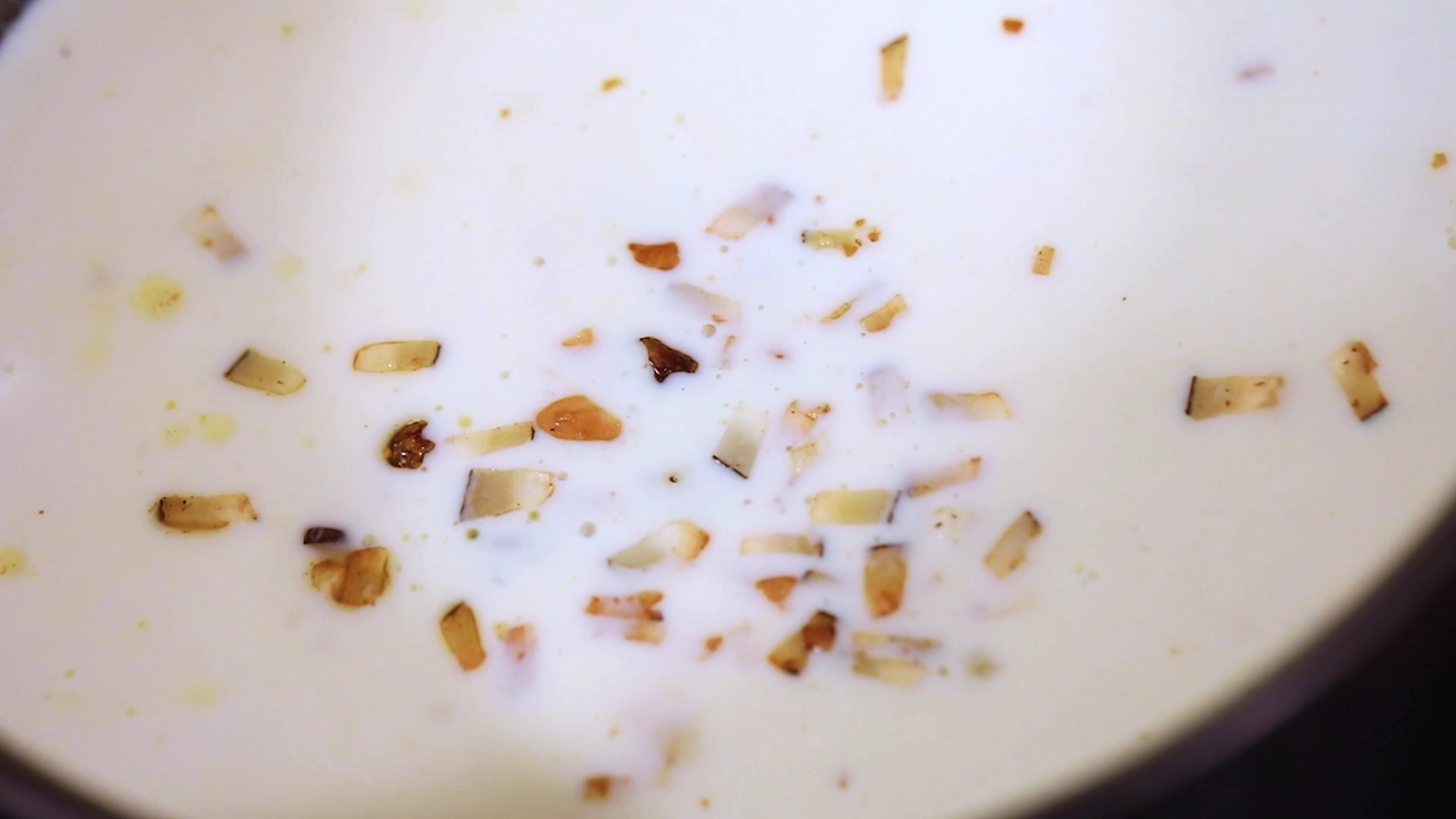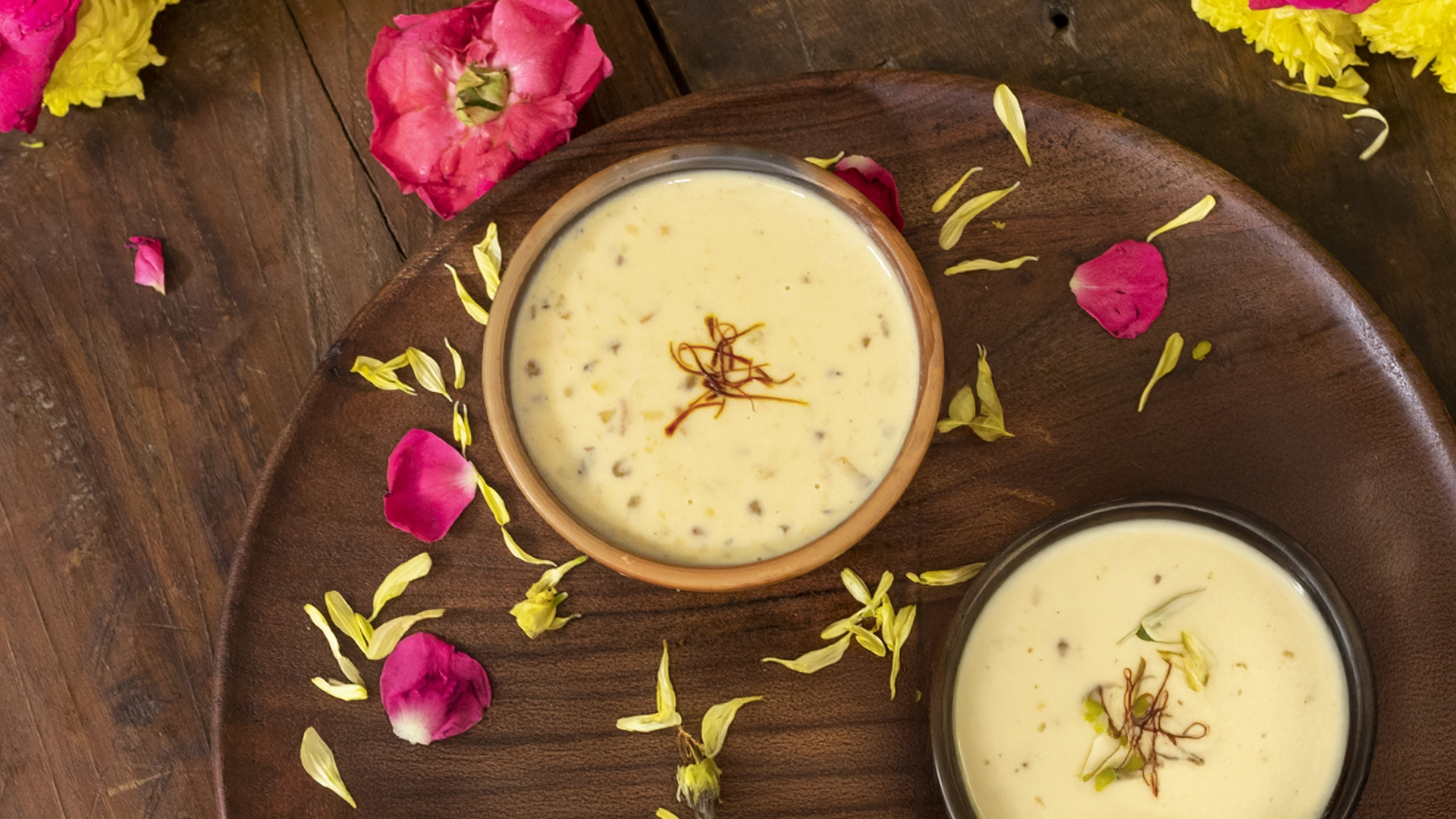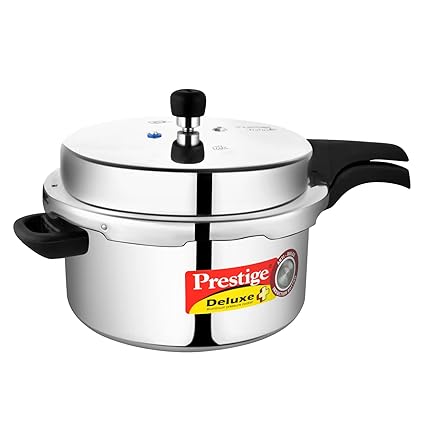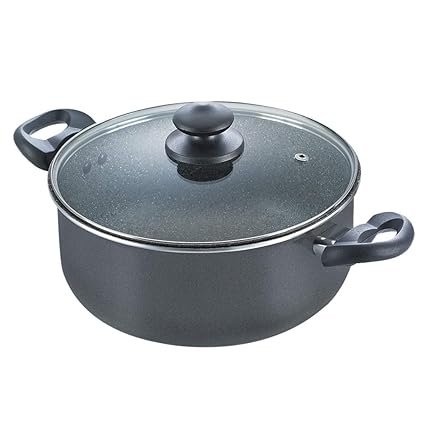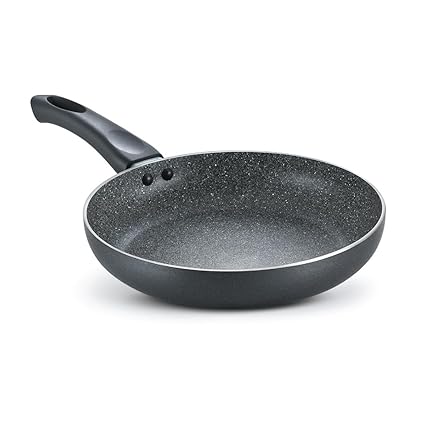Ever notice how a single spoonful of kheer can take you right back to festive mornings and temple visits?
That’s sabudana kheer for you, a silky, slightly sweet payasam that’s perfect for Navratri, fasting days, or any time you want a comforting, gluten-free dessert that feels indulgent but wholesome.
It’s also a brilliant way to turn humble ingredients (sago, dal, jaggery, milk) into something celebratory.
Why this recipe sings
Sabudana gives the kheer a glossy, melt-in-the-mouth texture. Chana dal adds body and subtle savory depth. Jaggery provides warm caramel notes, and milk rounds everything into a rich, comforting finish. In short: creamy, nutty, and just sweet enough.
This is a Navratri favorite because it’s sattvic (suitable for many fasting rules) and feels celebratory without using grains or regular sugar.
Quick context: a little history & cuisine note
Kheer and payasam have centuries of history across South and North India; every region has its version.
Using sabudana (tapioca pearls) is particularly popular in fasting recipes in western and southern India. Pairing it with chana dal balances texture and nutrition, turning a simple dessert into a nourishing treat.
Ingredient breakdown — what each does for the dish
- Sabudana (tapioca pearls): Provides the glossy, chewy body.
- Chana dal (soaked): Cooks soft and slightly grainy; gives protein and a subtle nutty taste.
- Milk: The creamy base — whole milk yields the richest kheer.
- Jaggery: Deep, molasses-like sweetness that complements the dal.
- Cardamom: Classic aromatic — keeps the dessert fragrant and fresh.
- Roasted cashews, raisins & coconut: Textural contrast — crunchy, plump and toasty notes.
Vegan Swap 🌿: Replace dairy milk with full-fat coconut milk or almond milk and swap ghee-roasted nuts for a little coconut oil to keep the flavor lush and compliant with vegan diets
How the kheer comes together
Start by soaking the chana dal and sabudana so they cook evenly and don’t break down into mush. You’ll cook the dal until tender and the sabudana until translucent — both should hold their shape but be soft to the bite. Meanwhile, bring milk gently to a simmer in a heavy-bottomed pot so it won’t scald.
Once the cooked dal and pearls meet the warm milk, you’ll let them blend together until the mixture thickens slightly into a luscious, porridge-like consistency. The jaggery is dissolved and strained into the kheer near the end so you preserve its rich caramel flavor without introducing grit. Finish with cardamom and fold in roasted cashews, raisins, and coconut for crunch and balance.
The trick is gentle heat and patience: low simmer, occasional stirring, and adding jaggery off-heat if you want to preserve more of its aroma.
Pro Tip 💡: When you melt jaggery, always strain the syrup before adding it to the milk to remove impurities — it keeps the kheer clear and prevents graininess. Also, add jaggery off the direct high flame (or to warm milk), so it blends smoothly without curdling.
What goes along with sabudana kheer
- Festive thali: Serve with vrat-friendly sabzi like aloo or kuttu rotis.
- Chai-time: A small cup of spiced tea pairs nicely if you’re not observing a fast.
- As dessert: Offer after a heavy meal — its light sweetness aids digestion.
How to serve
Serve warm or at room temperature in small bowls. A few toasted cashew halves, a sprinkle of freshly grated coconut or a dash of crushed cardamom on top makes it look festive. For Navratri, present it in small earthen bowls for an authentic vibe.
Packing & lunchbox tips
- Cool completely before refrigerating to avoid condensation.
- Store in an airtight container for up to 2–3 days (jaggery may make it darker over time).
- Reheat gently on low — add a splash of milk or water to revive the silky texture.
Party & batch prep
You can halve or double the recipe easily. For a crowd:
- Cook dal and sabudana in separate large pots, then combine into a big milk vat and sweeten.
- Keep jaggery syrup on the side and fold it in just before serving to maintain color and aroma.
- Prepare roasted nuts and coconut ahead and store in an airtight jar so they stay crunchy when you garnish.
🌸 Other Navratri Recipes You Might Like:
🥗 Snacks & Light Meals
- Sabudana Vada – crunchy classic fasting snack.
- Chana Dal Sundal – South Indian Navratri prasadam.
- Black Chana Sundal – another Sundal variety for Navratri.
- Masala Chana Sundal – another Sundal variety for Navratri.
🍬 Sweets & Ladoos
- Makhana Ladoo – energy-rich, perfect for fasting.
- Dry Fruit Ladoo – nutrient-dense festive sweet.
- Healthy Sesame Ladoo – nutty & wholesome.
- Peanut Ladoo – quick 3-ingredient ladoo.
- Poha Ladoo (Aval Laddu) – simple festive sweet.
- Jaggery Coconut Ladoo – traditional healthy ladoo.
- Makhana Kheer – creamy festive dessert.
Sabudana Kheer (Sabudana Payasam)
Description
Sabudana kheer is a creamy, comforting Indian dessert made with soaked sabudana (tapioca pearls), chana dal, milk, and jaggery. The combination of soft sabudana, nutty dal, and the richness of milk gives this kheer a unique texture that’s both wholesome and delicious. Lightly flavored with cardamom and topped with roasted cashews, raisins, and coconut, it’s a festive treat often prepared during Navratri and other special occasions. This kheer is not just easy to make but also a beautiful balance of tradition and taste—perfect for sharing with family after a meal or as a sweet dish on fasting days.
Ingredients
Instructions
Prep Work
-
Soak chana dal
Soak chana dal in water for about an hour until it softens.
-
Soak sabudana
Soak sabudana in water for about an hour until it turns soft. -
Roast nuts and coconut
Roast cashew nuts, raisins, and coconut until golden and keep aside.
Method
-
Cook chana dal
Add soaked chana dal and water to a pressure cooker. cook until dal is soft.
-
Cook sabudana
Transfer soaked sabudana into a pot with water. Cook until transparent. -
Melt jaggery
Pour water into a saucepan, add jaggery, and let it melt completely. -
Boil milk
Pour milk into a big pot and bring to a boil. -
Combine dal and sabudana
Add cooked dal and sabudana into the boiled milk. Let it simmer for 5 minutes. -
Add flavoring
Stir in cardamom powder, roasted cashews, raisins, and coconut. -
Strain jaggery
Strain the melted jaggery into the mixture to remove impurities. -
Final boil
Mix everything and let it boil together for about 15 minutes. -
Serve
The kheer warm.
Nutrition Facts
Servings 4
- Amount Per Serving
- Calories 312kcal
- % Daily Value *
- Total Fat 8g13%
- Saturated Fat 4.5g23%
- Cholesterol 20mg7%
- Sodium 58mg3%
- Potassium 245mg8%
- Total Carbohydrate 55g19%
- Dietary Fiber 2g8%
- Sugars 30g
- Protein 8g16%
- Vitamin A 190 IU
- Vitamin C 0.8 mg
- Calcium 195 mg
- Iron 1.4 mg
- Phosphorus 170 mg
- Magnesium 40 mg
- Zinc 1 mg
- Copper 0.2 mg
- Manganese 0.5 mg
* Percent Daily Values are based on a 2,000 calorie diet. Your daily value may be higher or lower depending on your calorie needs.



